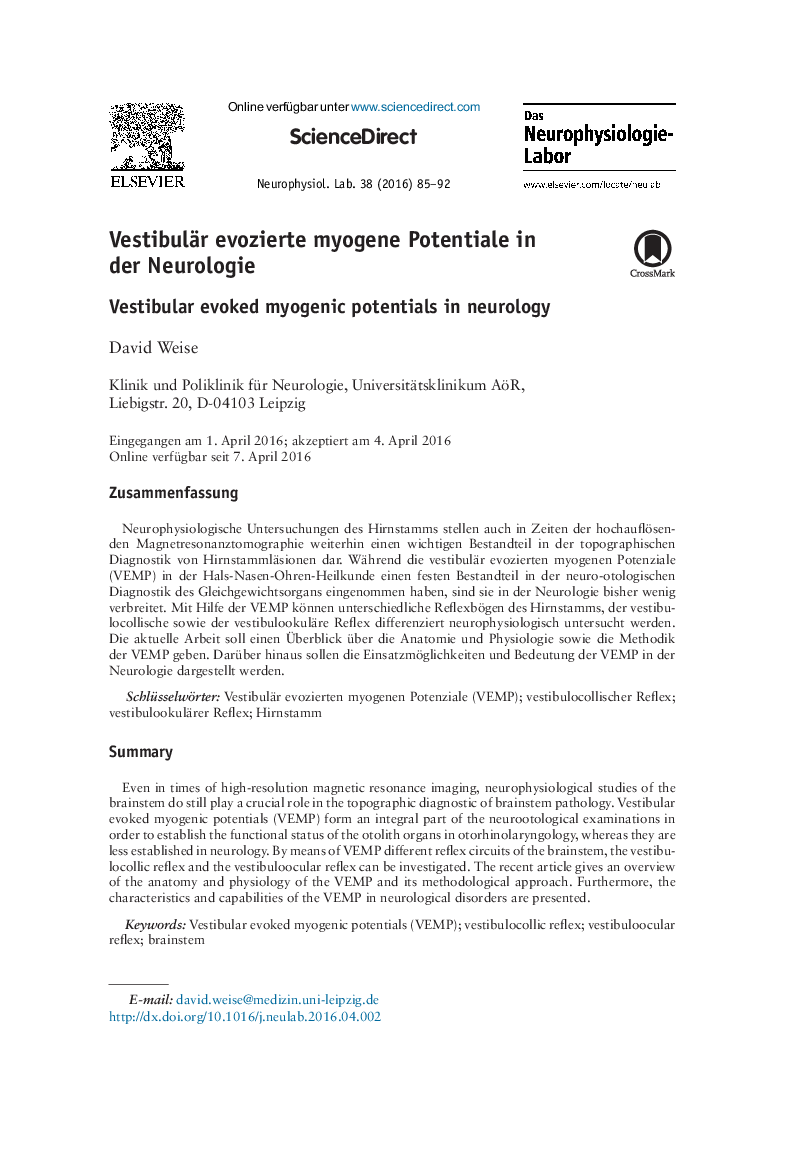| Article ID | Journal | Published Year | Pages | File Type |
|---|---|---|---|---|
| 2684793 | Das Neurophysiologie-Labor | 2016 | 8 Pages |
ZusammenfassungNeurophysiologische Untersuchungen des Hirnstamms stellen auch in Zeiten der hochauflösenden Magnetresonanztomographie weiterhin einen wichtigen Bestandteil in der topographischen Diagnostik von Hirnstammläsionen dar. Während die vestibulär evozierten myogenen Potenziale (VEMP) in der Hals-Nasen-Ohren-Heilkunde einen festen Bestandteil in der neuro-otologischen Diagnostik des Gleichgewichtsorgans eingenommen haben, sind sie in der Neurologie bisher wenig verbreitet. Mit Hilfe der VEMP können unterschiedliche Reflexbögen des Hirnstamms, der vestibulocollische sowie der vestibulookuläre Reflex differenziert neurophysiologisch untersucht werden. Die aktuelle Arbeit soll einen Überblick über die Anatomie und Physiologie sowie die Methodik der VEMP geben. Darüber hinaus sollen die Einsatzmöglichkeiten und Bedeutung der VEMP in der Neurologie dargestellt werden.
SummaryEven in times of high-resolution magnetic resonance imaging, neurophysiological studies of the brainstem do still play a crucial role in the topographic diagnostic of brainstem pathology. Vestibular evoked myogenic potentials (VEMP) form an integral part of the neurootological examinations in order to establish the functional status of the otolith organs in otorhinolaryngology, whereas they are less established in neurology. By means of VEMP different reflex circuits of the brainstem, the vestibulocollic reflex and the vestibuloocular reflex can be investigated. The recent article gives an overview of the anatomy and physiology of the VEMP and its methodological approach. Furthermore, the characteristics and capabilities of the VEMP in neurological disorders are presented.
